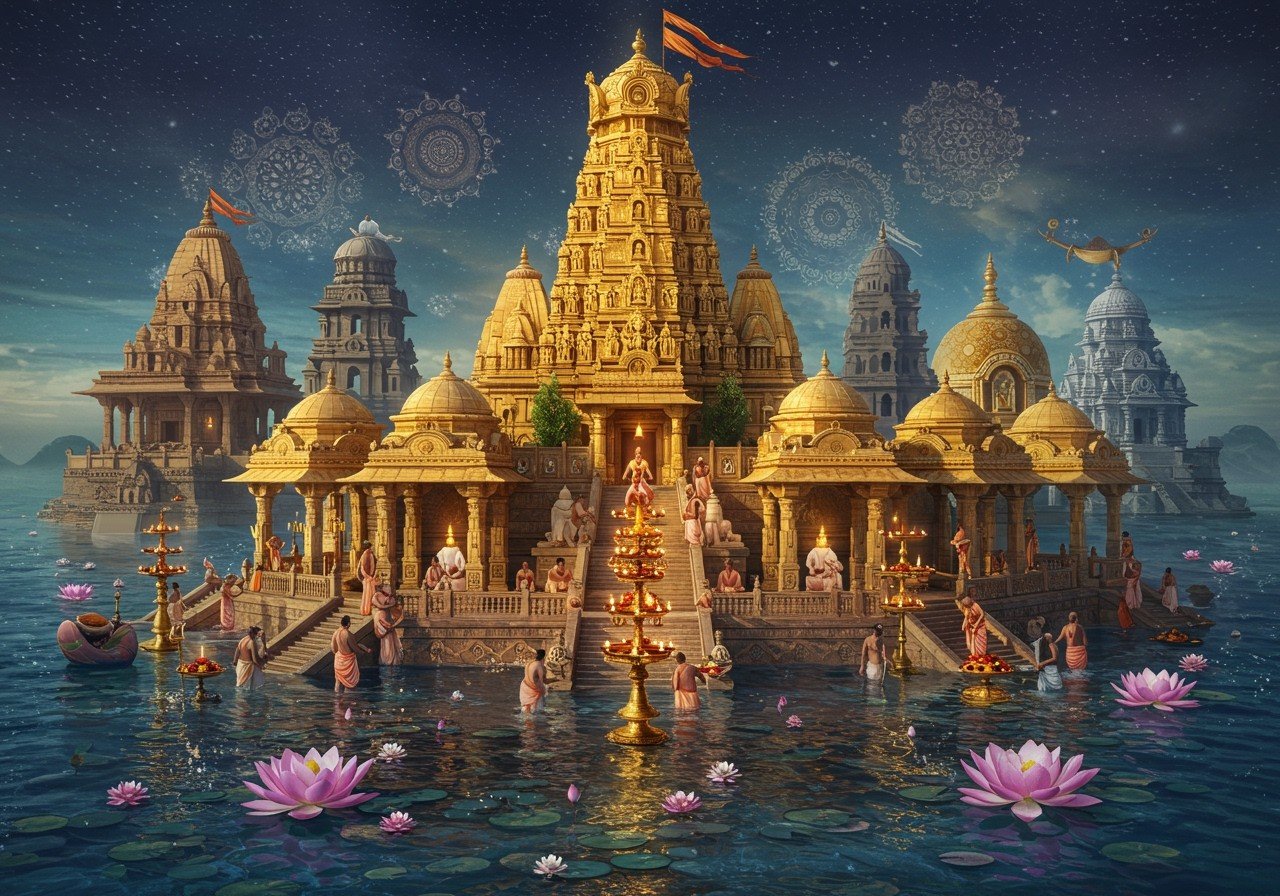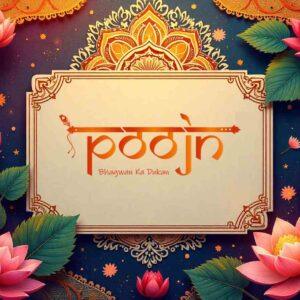
The Pancharatra tradition holds a special place in the spiritual tapestry of India. This ancient collection of sacred texts serves as a guide to the worship of Lord Vishnu, influencing a rich diversity of regional rituals. Understanding these traditions offers a valuable connection to cultural roots and spiritual heritage.
Understanding Pancharatra Agama
Pancharatra Agama represents a body of texts central to Hindu worship, particularly focusing on devotion to Vishnu. These scriptures delineate essential rituals and philosophies, shaping temple architecture, iconography, and religious ceremonies. Unlike Shaiva and Shakta Agamas, the Pancharatra Agama emphasizes Vishnu’s worship, fostering a sense of unity in devotion while allowing for the beauty of diverse practices. This tradition plays a vital role in preserving spiritual essence and cultural identity across different regions.
Exploring Pancharatra Agama in Hindi-Speaking Regions
The Pancharatra Agama holds a prominent position in Hindi-speaking areas, weaving together local customs with time-honored practices. These regions treasure their unique interpretations of Pancharatra, reflecting their profound devotion to Vishnu.
Integration with Local Customs
In North India, Pancharatra traditions intertwine with local customs, creating a distinctive spiritual landscape. Temples in these areas adhere to rituals that incorporate regional nuances. Despite historical challenges, such as a reduced number of grand temples due to past invasions, Pancharatra practices have persevered thanks to the dedication of devoted communities. The resilience of these traditions speaks to the enduring power of faith and cultural preservation.
Influence of Hindi Literature and Bhakti Movements
Hindi literature has served as a powerful vehicle for preserving and disseminating Pancharatra traditions. The Bhakti movements, which emphasize personal devotion, have significantly enriched these practices. Devotees articulate their love for Vishnu through poetry and songs, infusing their worship with a deep emotional resonance. This literary and spiritual expression contributes to the vibrant tapestry of Pancharatra in the region.
Unveiling Pancharatra in Tamil Nadu
Tamil Nadu presents a vibrant landscape for Pancharatra Agama traditions. The region’s spiritual history is intricately linked to these practices, enriched by contributions from Tamil literature and the devotion of revered saints.
The Role of Tamil Literature and Alvars
The Alvars, Tamil poet-saints, have profoundly shaped Pancharatra traditions in Tamil Nadu. Their hymns, rich in devotional fervor and philosophical depth, continue to inspire generations of worshippers. Prominent temples such as Srirangam and Kanchipuram stand as pillars of Pancharatra rituals, exerting a significant influence on the cultural fabric of the region. The legacy of the Alvars resonates deeply within the spiritual heart of Tamil Nadu.
Impact on Tamil Culture
The influence of Pancharatra extends far beyond the walls of temples, permeating Tamil culture, art, and festivals. The dedication of scholars and religious leaders has played a vital role in safeguarding these traditions, ensuring their continued relevance in contemporary society. This commitment to preservation highlights the enduring significance of Pancharatra in Tamil Nadu’s cultural identity.
Discovering Pancharatra in Karnataka
In Karnataka, Pancharatra traditions have adapted to the unique cultural context of the region. Kannada literature and temple traditions enrich these practices, nurturing a strong connection with Lord Vishnu.
The Influence of Kannada Literature
Kannada literature has been instrumental in nurturing Pancharatra traditions. Devotees express their spirituality through verses that extol Vishnu’s glory. This literary heritage provides crucial support for the continuity of these ancient practices, reflecting the deep integration of faith and artistic expression. The power of words sustains the spiritual essence of Pancharatra in the region.
Key Temples and Community Involvement
Karnataka is home to significant Vishnu temples, such as the Udupi Sri Krishna Temple, where Pancharatra rituals hold a central place. Active involvement from local communities and religious institutions ensures the preservation of these traditions, allowing them to flourish even in a constantly evolving world. This community engagement is essential for the continued vitality of Pancharatra.
Regional Variations and Ritual Differences
Pancharatra rituals exhibit regional variations across India, influenced by a combination of geographical and cultural factors. These variations showcase the rich diversity inherent in Hindu worship practices.
Geographical Influences on Rituals
Regions east of the Vindhya hills, for example, observe distinct practices shaped by local geography and historical events. Differences in temple ceremonies, festival celebrations, and daily worship highlight the unique character of each region’s spiritual expression. These variations demonstrate the adaptability of Pancharatra to diverse environments and historical contexts.
The Role of Local Deities and Legends
Local deities and legends further enrich regional interpretations of Pancharatra traditions. These elements contribute unique dimensions to rituals, enhancing the spiritual experience for devotees. The integration of local narratives adds depth and meaning to the broader Pancharatra framework, demonstrating the dynamic interplay between universal principles and local expressions of faith. By exploring regional variations within Pancharatra, we gain a deeper appreciation for the complex tapestry of Hindu worship and its ability to accommodate a wide range of cultural influences.
Understanding these diverse practices allows individuals to forge stronger connections with their spiritual roots. Exploring the unique aspects of Pancharatra traditions fosters an appreciation for India’s rich and varied cultural heritage.
How Poojn.in Supports Your Pancharatra Rituals
Poojn.in provides a wide selection of essential items for Pancharatra rituals across various regions of India. We offer authentic ritual items that align with local traditions and customs, ensuring devotees have access to the specific items needed for their practices.
Explore our diverse collection:
- Kushal Mangal Sandalwood Puja Prayer Agarbatti Incense Sticks: Perfect for creating a sacred atmosphere during your Pancharatra rituals.
- Ladoo Gopal Brass Murti: A beautiful murti for your home altar, representing the divine presence of Lord Krishna.
- Lord Shiva Marble Dust Murti: Although not directly related to Pancharatra, this murti is ideal for devotees who also worship Lord Shiva.
- Mangalam Camphor: An essential item for purification rituals and creating a sacred ambiance.
Visit www.poojn.in today to discover our complete collection or consult our experts for personalized guidance on selecting items tailored to your regional traditions.
Embracing the Diversity of Pancharatra Across India
Pancharatra traditions reveal a rich tapestry of devotion and spirituality that spans the diverse regions of India. From the Hindi-speaking heartland to the vibrant temples of Tamil Nadu and the culturally rich lands of Karnataka, each area offers a unique expression of reverence and love for Lord Vishnu. These regional variations, shaped by local customs, literature, and legends, demonstrate the profound cultural roots and cherished traditions of each community. As we explore these practices, we develop a deeper understanding and appreciation for the Pancharatra Agama.
FAQs on Pancharatra Across India: Regional Traditions and Ritual Variations
What is Pancharatra in Hindi?
Pancharatra, in the context of Hindi-speaking regions, encompasses the ancient scriptures and practices associated with Vaishnavism. It includes a rich array of rituals and traditions followed by devotees in these areas, reflecting their deep connection to Lord Vishnu.
How is Pancharatra practiced in Tamil Nadu?
In Tamil Nadu, Pancharatra rituals are intricately interwoven with the local culture. Temples often conduct ceremonies and festivals that reflect the traditional practices of the Pancharatra Agama, adapted to Tamil customs and enriched by the contributions of Tamil saints and scholars. This blend of tradition and local culture creates a unique expression of Pancharatra in the region.
What are the key features of Pancharatra in Kannada?
Pancharatra in Kannada-speaking areas emphasizes devotional worship and temple rituals. This includes the chanting of hymns, the offering of prasadam, and the performance of aarti, all in accordance with local Kannada traditions. These practices reflect the deep-rooted devotion to Lord Vishnu and the integration of faith into the cultural fabric of the region.
Why is Pancharatra important in Indian culture?
Pancharatra holds a significant place in Indian culture by providing a structured approach to worship and devotion. It serves as a vital link to ancient traditions and connects communities across diverse regions through shared beliefs and practices. This unifying aspect contributes to the rich spiritual tapestry of India.
Are there any differences between Pancharatra practices in North and South India?
Yes, while the core principles remain consistent, variations exist in Pancharatra practices between North and South India. Rituals and festivities often reflect regional cultural differences, showcasing the adaptability of Pancharatra to diverse cultural contexts. These variations enhance the richness and complexity of the tradition across the country.
Can anyone practice Pancharatra rituals?
Pancharatra rituals are open to all who are interested in following them, irrespective of background. These rituals are designed to foster spiritual growth and deepen devotion, providing a path for individuals seeking to connect with Lord Vishnu and the rich traditions of Vaishnavism.
How does Pancharatra influence temple architecture?
Pancharatra exerts a considerable influence on temple architecture across India. Temples constructed according to Pancharatra principles often display intricate designs and specific layouts that facilitate the performance of designated rituals and ceremonies. The architectural elements themselves become part of the spiritual experience, reflecting the deep connection between physical space and religious practice.
Further Exploration of Regional Differences
-
Agama’s and Temple Management: Agamas serve as manuals for temple management, predominantly in South India. Each temple often adheres to its own specific Agama, circulating among temple administrators, typically Brahmins. This individualized approach reflects the localized nature of temple administration and ritual practice.
-
North vs. South India: The relative scarcity of grand temples in North India is often attributed to historical factors like Muslim invasions. Temple complexes in the Himalayan regions, while significant, are not linked to the same extensive agricultural resources and Brahmin societies as those in the South. In South India, Vishnu temples typically follow either Vaikhanasa or Pancharatra Agama, highlighting the prevalence of these traditions in the region.
-
Traditions and Lineage: Vaishnavism encompasses numerous sects and groups with varying interpretations of the relationship between the individual and the divine. Some temples follow Pancharatra Agama, while others adhere to Vaikhanasa Agama. Among Sri Vaishnavas, Thenkalai and Vadakalai are two prominent sects distinguished by their Guru Parampara (lineage). These diverse lineages contribute to the rich tapestry of Vaishnava traditions.
-
Pancharatra and Vaikhanasa Agamas: These two Agamas differ in their history and traditions. Vaikhanasas believe Lord Venkateswara is present to receive worship, while Pancharatras believe He bestows His blessings. Vaikhanasas do not acknowledge Ramanuja or the Alvars, marking a key distinction between the two traditions. These different perspectives shape the rituals and theological understanding within each Agama.
-
Geographical influences: Geographical regions have played a role in shaping Vaishnava traditions. The land east of the Vindhya hills extending up to Java is known as Vishnu Kranta. The area north of the Vindhya hills, including parts of mainland China, is referred to as Ratha Kranta. The remaining part of India westward is designated as Asva Kranta. These geographical designations reflect the historical spread and influence of Vaishnavism across different regions.
Explore South India’s sacred sites and delve deeper into the rich traditions of the region. You can also discover Mahavinayak temples for a broader understanding of temple architecture and ritual practices.


